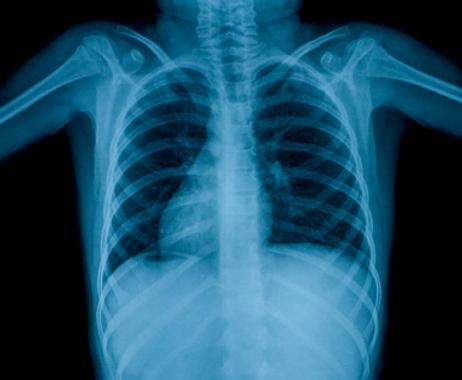Tuberculosis is often thought of as a disease that primarily strikes poverty-laden areas and third-world countries. However, recent cases of tuberculosis in public schools in the United States have raised new concerns about the illness right here at home. While the risk of getting tuberculosis in this country is still relatively rare, it is not completely out of the question. This article will explore the new cases of tuberculosis that have been reported at schools around the country, as well as a brief overview of the illness and some of the symptoms to watch.
What is Tuberculosis?
According to the Health Protection Agency, tuberculosis, also known as TB, is an infectious disease caused by the bacteria tubercle bacillus. These bacteria can survive in the body for years in a dormant state, which explains why some people can test positive for the infection, but not present with any symptoms of the disease. While tuberculosis ran rampant during the past two centuries, incidences of the disease are much lower today in most industrialized nations. However, in other parts of the world, tuberculosis is still a big problem, and health experts estimate that around one-third of the world's population is infected.
How is Tuberculosis Spread?
Tuberculosis is spread through the air, when a person who has an active form of the illness coughs, sneezes or talks, but it takes significant exposure over a period of time to actually "catch" the disease. The Health Protection Agency cites studies that show only about 30 percent of healthy people who are exposed to TB will ever get infected. Of that number, about 10-15 percent will actually develop an active form of the disease. Most of these people will develop tuberculosis within five years of exposure. Children are more likely to develop the illness than adults after exposure to the bacteria.
Symptoms of Tuberculosis
According to the Mayo Clinic, the symptoms of tuberculosis may appear once the disease becomes active and may include:
- Unexplained weight loss
- Cough
- Fever and chills
- Night sweats
- Fatigue
- Loss of appetite
If the disease presents in the lungs, additional symptoms might include coughing up blood, coughing that lasts a number of weeks or chest pain with coughing. While this is the most common type of tuberculosis, the disease can also attack the kidneys, brain and spine. When it presents in these organs, the symptoms may be very different, making this a relatively difficult disease to diagnose at times.
This video outlines how tuberculosis begins.
Treatment of Tuberculosis
The good news is that tuberculosis can be effectively treated today through a round of antibiotics that are usually taken for a minimum of six months. There are also anti-TB drugs that minimize the symptoms of the disease and eliminate the infectious nature of the illness. In some cases, patients with tuberculosis may be on three to four medications simultaneously, and each drug must be taken precisely as directed to provide the desired results.
Tuberculosis in Schools
In recent months, a number of school nurses across the country have reported cases of tuberculosis, including the following:
Jefferson Davis High School, Montgomery, Alabama
According to a report at WAKA, a tuberculosis case was recently reported at Jefferson Davis High School in Montgomery, Alabama. Last week, the State Department of Public Health notified Montgomery Public Schools' Superintendent Barbara Thompson that one of the students at the high school tested positive for TB. Thompson says parents of all the students at the school will also be notified, and free testing will be offered to all students, faculty and support staff.
Thompson also noted on AL.com that while the disease is contagious, there is no immediate threat to students or staff at the school, since the infection is relatively difficult to transmit. The health department will be providing a skin test to all students and faculty members, and if the skin test comes back positive, a chest x-ray will then be administered to see if the disease is active. Teachers and staff are also undergoing training on how to look for symptoms of the disease.
Park Vista Elementary School, Opelousas, Louisiana
An article in Daily World reports that a possible TB case has been found at Park Vista Elementary School in Louisiana. While the student has exhibited some symptoms of TB, the results of the sputum test that was taken will not be available for six to eight weeks. In the meantime, the student's classmates will all be given TB skin tests as a precaution.
High Schools in Florida and California
Last month, a student at Lake Worth High School in Florida was also diagnosed with tuberculosis, according to a report at the Sun Sentinel. The Palm Beach County Health Department confirmed the diagnosis and tested students and staff at the school who were in close contact with the student.
Another high school in California also confirmed a case of tuberculosis at the end of last year. According to KPBS, a student at Patrick Henry High School was confirmed to have tuberculosis, and testing was provided to students at the school in January.
This video explains how to prevent tuberculosis.
While tuberculosis in schools is a concern, it is still relatively rare. The good news is that by being aware of the symptoms of the disease, incidences can be identified much more quickly so that students and staff who have been exposed to the sick individual can receive testing and treatment as quickly as possible. With drugs that effectively cure tuberculosis today, careful handling and quick response to the disease make a big difference in just how severe an outbreak might become.
Questions? Contact us on Facebook. @publicschoolreview













